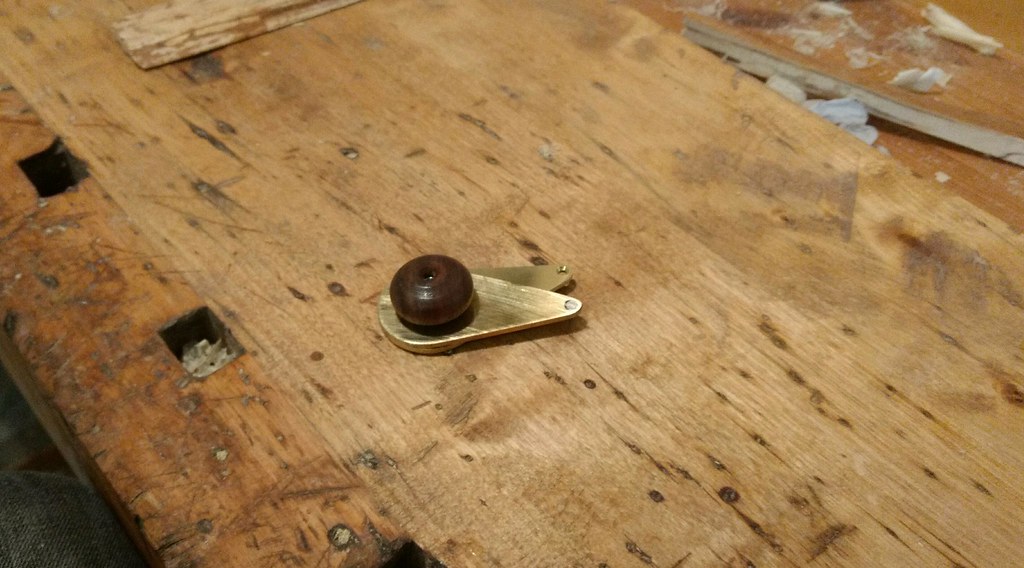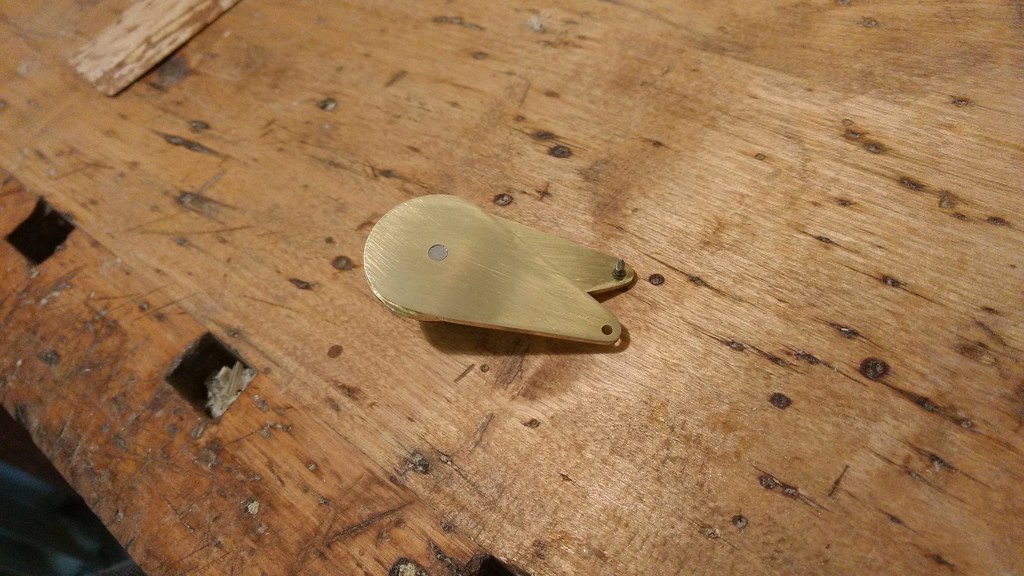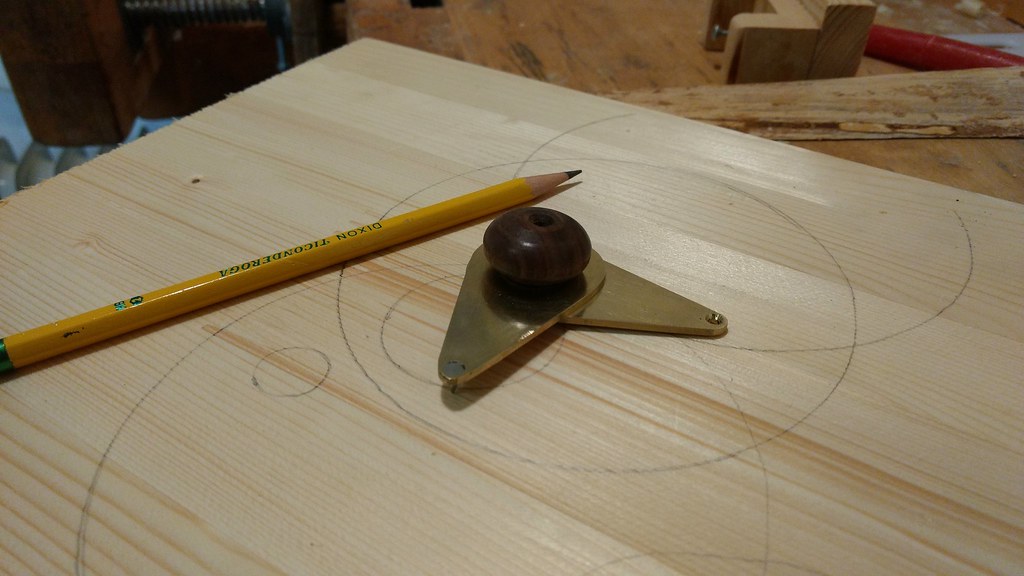You are using an out of date browser. It may not display this or other websites correctly.
You should upgrade or use an alternative browser.
You should upgrade or use an alternative browser.
What did you do in your workshop today ?
- Thread starter biskit
- Start date

Help Support UKworkshop.co.uk:
This site may earn a commission from merchant affiliate
links, including eBay, Amazon, and others.
- Status
- Not open for further replies.
thetyreman
Established Member
MarkDennehy
Established Member
Had a bit of a play with the new toy:
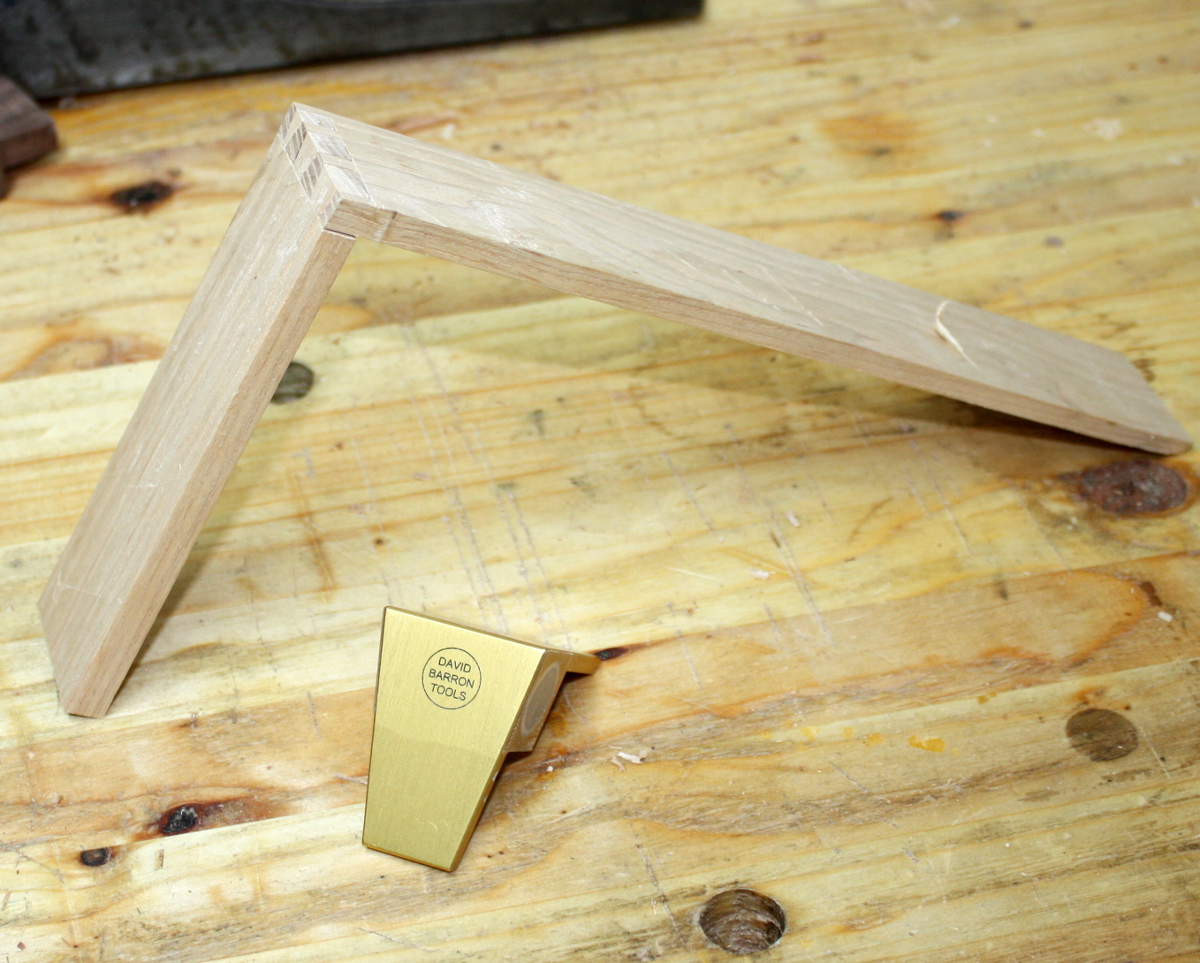
End result is gappy as a gappy thing:
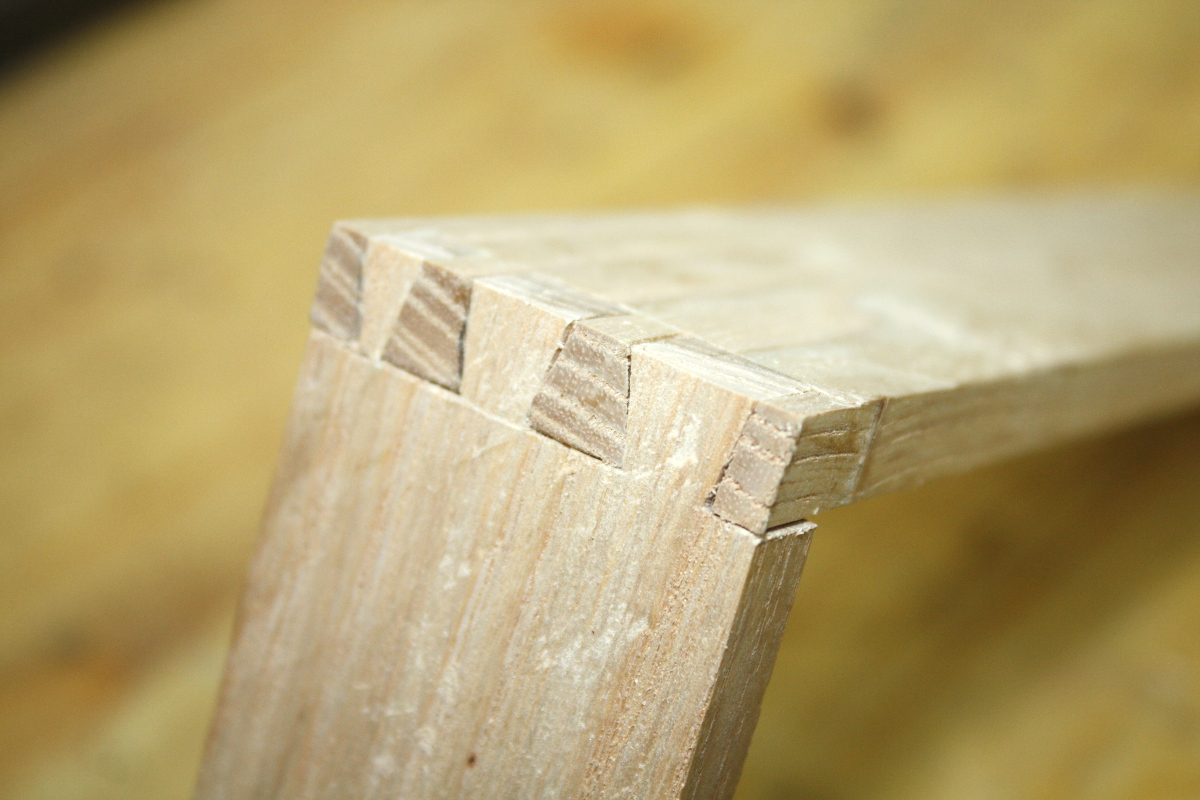
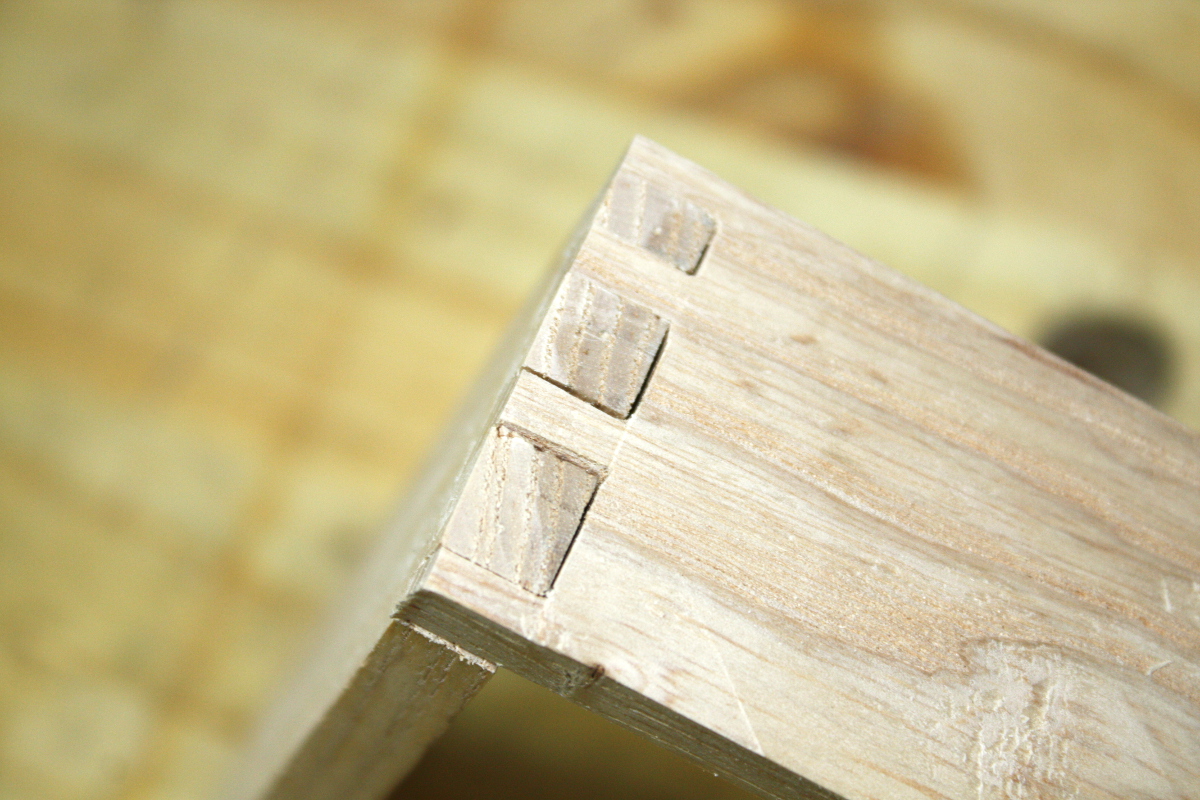
But for a first attempt at cutting dovetails, and given that the shed was a touch cold (3.8C on the thermometer) and I was having trouble feeling my fingers, I'm okay with the result

End result is gappy as a gappy thing:


But for a first attempt at cutting dovetails, and given that the shed was a touch cold (3.8C on the thermometer) and I was having trouble feeling my fingers, I'm okay with the result
John15
Established Member
Mark
The secret is to practice, and practice, and practice again.
John
The secret is to practice, and practice, and practice again.
John
custard
Established Member
MarkDennehy":jxm2s139 said:Had a bit of a play with the new toy:
End result is gappy as a gappy thing:
But for a first attempt at cutting dovetails, and given that the shed was a touch cold (3.8C on the thermometer) and I was having trouble feeling my fingers, I'm okay with the result
And you should be okay, gaps or no gaps that's a strong joint that will last a long, long time.
The problem is that practise might not, by itself, improve things all that much. The David Barron jigs are a great aid for accurate sawing, but they do nothing to help with the transfer. When you mark out the pin board from the tail board the transfer marks need to still be there after you've completed the pin board cuts, otherwise you'll have a gap. I really like the David Barron jigs and would recommend them to anyone learning dovetailing, but unless you really pay attention they probably slightly hinder accurate saw placement up to the transfer marks (but not past them) on the pin board.
There's another (tiny) negative about them. When you use a western saw for dovetailing it's customary to make the saw cuts with the face side towards you, therefore any break out from the saw is hidden on the reverse. But using a Japanese pull stroke saw with the David Barron jig means that some of the cuts can only be completed with the break out on the face side. You don't have the flexibility of choosing which way around to put the board in the vice. Furthermore, a Japanese saw tends to produce a little "peeling" ahead of and below the cut, this can sometimes obscure the gauge line that marks the end of the cut, making it tricky not to then cut a fraction past that line.
As I said, I really rate these magnetic jigs to get you up and running, but once your confidence has been built I suspect you'll get even better results with a western saw used freehand.

£12.50 (£1.25 / count)
£14.45 (£1.44 / count)
JSP M632 FFP3moulded Disposable Dustmask (Box of 10) One Size suitable for Construction, DIY, Industrial, Sanding, dust protection 99 Percent particle filtration Conforms and Complies to EN 149
Amazon.co.uk

£19.33 (£3.87 / count)
£19.99 (£4.00 / count)
Stealth Lite Pro FFP3 Face Masks UK Certified Dust Mask. 99.99% particle filtration, air filter reusable face mask. FFP3 Mask -7 day use per Construction, Woodworking, DIY and Welding Mask
Amazon.co.uk

£13.99 (£2.80 / count)
VEVOX® FFP1 Dust Mask - Set of 5 - Valved Face Masks - Respirator - Protection e.g. for Construction, Building Work, Sanding, Woodworking, Fine Dusts, Aersoles or Particles
SLSK Ventures GmbH (UK)

£17.99 (£1.80 / count)
£27.44 (£2.74 / count)
3M 8822 Disposable-fine dust mask FFP2 (10-pack)
Amazon.co.uk
MarkDennehy
Established Member
I don't doubt it Custard, but if it hadn't been for the eclipse guide, I'd never have gotten to the point where I can at least touch up a chisel on the stones freehand (I still fall back to the jig for resetting a bevel or doing anything major, but I'll improve with time). Without someone standing behind you with a critical eye and a rolled-up newspaper, physical skills like this are a pain to pick up  So I'll start off with the jigs and maybe one day get good enough to do them freehand well enough to not need the jigs.
So I'll start off with the jigs and maybe one day get good enough to do them freehand well enough to not need the jigs.
And you're right about the lighting; I have a nice ten-quid LED floodlight from ebay to install in the shed tomorrow, that might help somewhat. By the time I'm done, I suspect the neighbours are going to wonder why the third encounters spaceship has landed at the end of my back yard, but hey, what you can do?
And you're right about the transfer; I had meant, but managed to forget, to do that shallow rebate trick on the tails board that Cosman was talking about.
And you're right about the lighting; I have a nice ten-quid LED floodlight from ebay to install in the shed tomorrow, that might help somewhat. By the time I'm done, I suspect the neighbours are going to wonder why the third encounters spaceship has landed at the end of my back yard, but hey, what you can do?
And you're right about the transfer; I had meant, but managed to forget, to do that shallow rebate trick on the tails board that Cosman was talking about.
Paddy Roxburgh
Established Member
Mark, whist there is room for improvement, you'd be surprised at how much better they'd look once you've glued them, clamped them and planned them flat.
Paddy
Paddy
woodbrains
Established Member
Hello,
Planing the splines for a batch of trinket/jewellery boxes. The next 3 of a batch, 7 already complete.
TBH I'm not making the most of this batch production in terms of time saving! I keep having ideas for the interiors and going off piste to make them. Then I had a few people like them and want them as Christmas presents, so I finished some, 'out of batch' and that put me off my stride. the basic mitred boxes were all done as a reasonably efficient batch though, just before Christmas, and now I'm resuming.
Ahh, the photo will have to wait till I work out how to make the file size smaller!
Mike.
Planing the splines for a batch of trinket/jewellery boxes. The next 3 of a batch, 7 already complete.
TBH I'm not making the most of this batch production in terms of time saving! I keep having ideas for the interiors and going off piste to make them. Then I had a few people like them and want them as Christmas presents, so I finished some, 'out of batch' and that put me off my stride. the basic mitred boxes were all done as a reasonably efficient batch though, just before Christmas, and now I'm resuming.
Ahh, the photo will have to wait till I work out how to make the file size smaller!
Mike.
monkeybiter
Established Member
woodbrains":3u8c5z7r said:Ahh, the photo will have to wait till I work out how to make the file size smaller!
Mike.
I quite like this: http://bluefive.pair.com/pixresizer.htm
easy enough to use.
custard
Established Member
There's a co-incidence, I'm in exactly the same place Mike! I was making three jewellery boxes for wife and daughters for Valentines day, got a few orders from clients who saw them part completed in the workshop, then emailed previous clients with the offer and got some additional orders, so then had to get those back into the "batch".
In hindsight the cost of locks and hinges are so substantial that the only way I'd ever offer jewellery boxes to clients again is with a more complex design at a higher price.
In hindsight the cost of locks and hinges are so substantial that the only way I'd ever offer jewellery boxes to clients again is with a more complex design at a higher price.
woodbrains
Established Member
monkeybiter":1qa63sgc said:woodbrains":1qa63sgc said:Ahh, the photo will have to wait till I work out how to make the file size smaller!
Mike.
I quite like this: http://bluefive.pair.com/pixresizer.htm
easy enough to use.
Hello,
Thanks for that, but I'm trying to do it straight from my phone, the PC is miles away! I'd normally use a camara and reduce the number of pixels to get lower res, but I don't seem to be able to do it on this phone.....probably missing something.
Mike.
El Barto
👍
MarkDennehy":3ckgrz54 said:Had a bit of a play with the new toy:

End result is gappy as a gappy thing:


But for a first attempt at cutting dovetails, and given that the shed was a touch cold (3.8C on the thermometer) and I was having trouble feeling my fingers, I'm okay with the result
I think that looks pretty dang good
woodbrains
Established Member
custard":2x6zruvi said:There's a co-incidence, I'm in exactly the same place Mike! I was making three jewellery boxes for wife and daughters for Valentines day, got a few orders from clients who saw them part completed in the workshop, then emailed previous clients with the offer and got some additional orders, so then had to get those back into the "batch".
In hindsight the cost of locks and hinges are so substantial that the only way I'd ever offer jewellery boxes to clients again is with a more complex design at a higher price.
Hello,
Jewellery boxes are difficult. Just the price of quality locks and hinges are often enough to push the price above what many are prepared to pay for a box. Something small has a Lower perceived value than a large item, despite the quality of the work, though ironically, the amount spent on the jewellery can be enormous.
These boxes have no locks or hinges, in an attempt to make the price attractive. I'm losing that battle though, I keep making more complex interiors!
Mike.
Edited, I meant lower perceived value of small items, doh!
MrTeroo
Established Member
woodbrains":22c9ukbn said:Hello,
Thanks for that, but I'm trying to do it straight from my phone, the PC is miles away! I'd normally use a camara and reduce the number of pixels to get lower res, but I don't seem to be able to do it on this phone.....probably missing something.
Mike.
Here's a couple of options for you
Android:
https://play.google.com/store/apps/details?id=com.simplemobilephotoresizer&hl=en_GB
iPhone:
https://itunes.apple.com/gb/app/image-size/id670766542?mt=8
custard
Established Member
woodbrains":20btstpw said:These boxes have no locks or hinges, in an attempt to make the price attractive.
Makes sense. With each of these, I'm £70 or £80 in a hole before I've even started due to the cost of hardware and materials.


Attachments
woodbrains
Established Member
Hello,

The photo I should have posted earlier.
Clamping the bandsawn cut spline to the bench and planing so the wood is in tension, to avoid buckling. It takes a bit of trial and error to get a good fit; it needs to be an easy slide fit without slop. A push fit is too tight, once the glue is on it swells so fast, it gets too tight and won't seat fully. Gappy splines don't look good. The three boxes to be finished; two Wenge and one Zebrano with contrasting sycamore splines.
Mike.

The photo I should have posted earlier.
Clamping the bandsawn cut spline to the bench and planing so the wood is in tension, to avoid buckling. It takes a bit of trial and error to get a good fit; it needs to be an easy slide fit without slop. A push fit is too tight, once the glue is on it swells so fast, it gets too tight and won't seat fully. Gappy splines don't look good. The three boxes to be finished; two Wenge and one Zebrano with contrasting sycamore splines.
Mike.
Attachments
MarkDennehy
Established Member
Beautiful work though. I mean, that's a metric buttload of brownie points with herself indoors right therecustard":2d1bx86z said:Makes sense. With each of these, I'm £70 or £80 in a hole before I've even started due to the cost of hardware and materials.
woodbrains
Established Member
Hello,
Trimming and flush planing the splines. Thankfully, no gaps.
Mark D note the Japanese backsaw I am using. I don't know what saw you are using with the dovetail guide, but Dozuki tend to be cross cut. The one in the photo is a ripsaw, I believe a more correctly called a Hosabiki. I use it almost exclusively for dovetailing. You might find a rip cut saw better.
Mr Teroo, hanks for the tip on resizing photos.
Off home now to take pictures of the finished boxes.
Mike.
Trimming and flush planing the splines. Thankfully, no gaps.
Mark D note the Japanese backsaw I am using. I don't know what saw you are using with the dovetail guide, but Dozuki tend to be cross cut. The one in the photo is a ripsaw, I believe a more correctly called a Hosabiki. I use it almost exclusively for dovetailing. You might find a rip cut saw better.
Mr Teroo, hanks for the tip on resizing photos.
Off home now to take pictures of the finished boxes.
Mike.
Attachments
El Barto
👍
custard":1rd8d9dg said:woodbrains":1rd8d9dg said:These boxes have no locks or hinges, in an attempt to make the price attractive.
Makes sense. With each of these, I'm £70 or £80 in a hole before I've even started due to the cost of hardware and materials.
Custard was kind enough to show me this in person and I have to say, the level of craftsmanship and attention to detail was unbelievable. Like I said at the time - putting the rest of us to shame for Valentine's Day...
- Status
- Not open for further replies.
Similar threads
- Replies
- 1
- Views
- 1K
- Replies
- 5
- Views
- 2K





